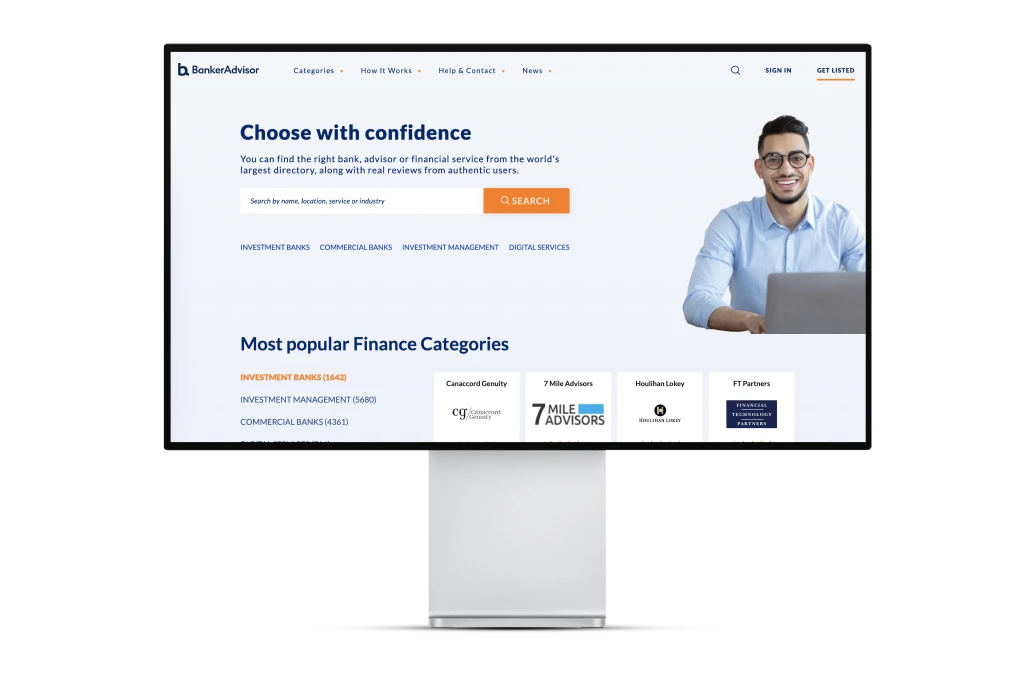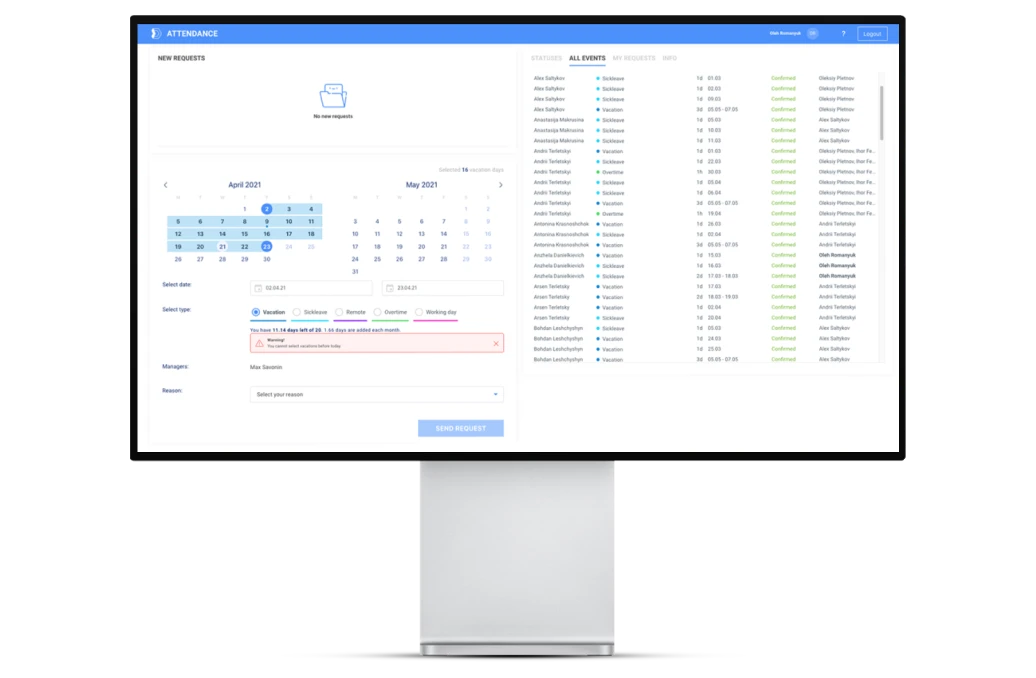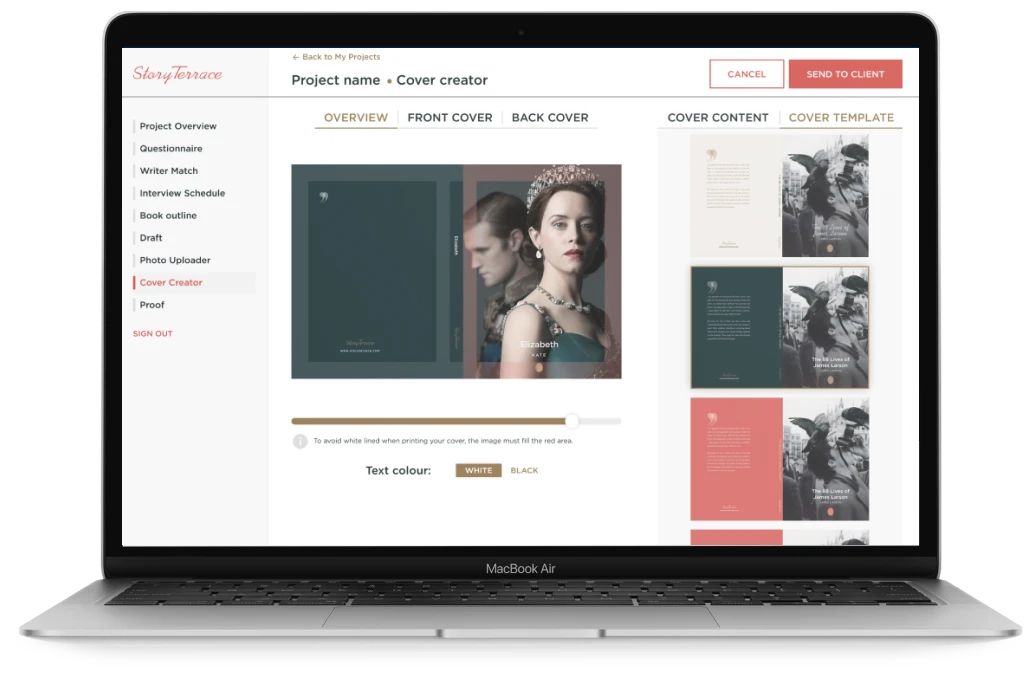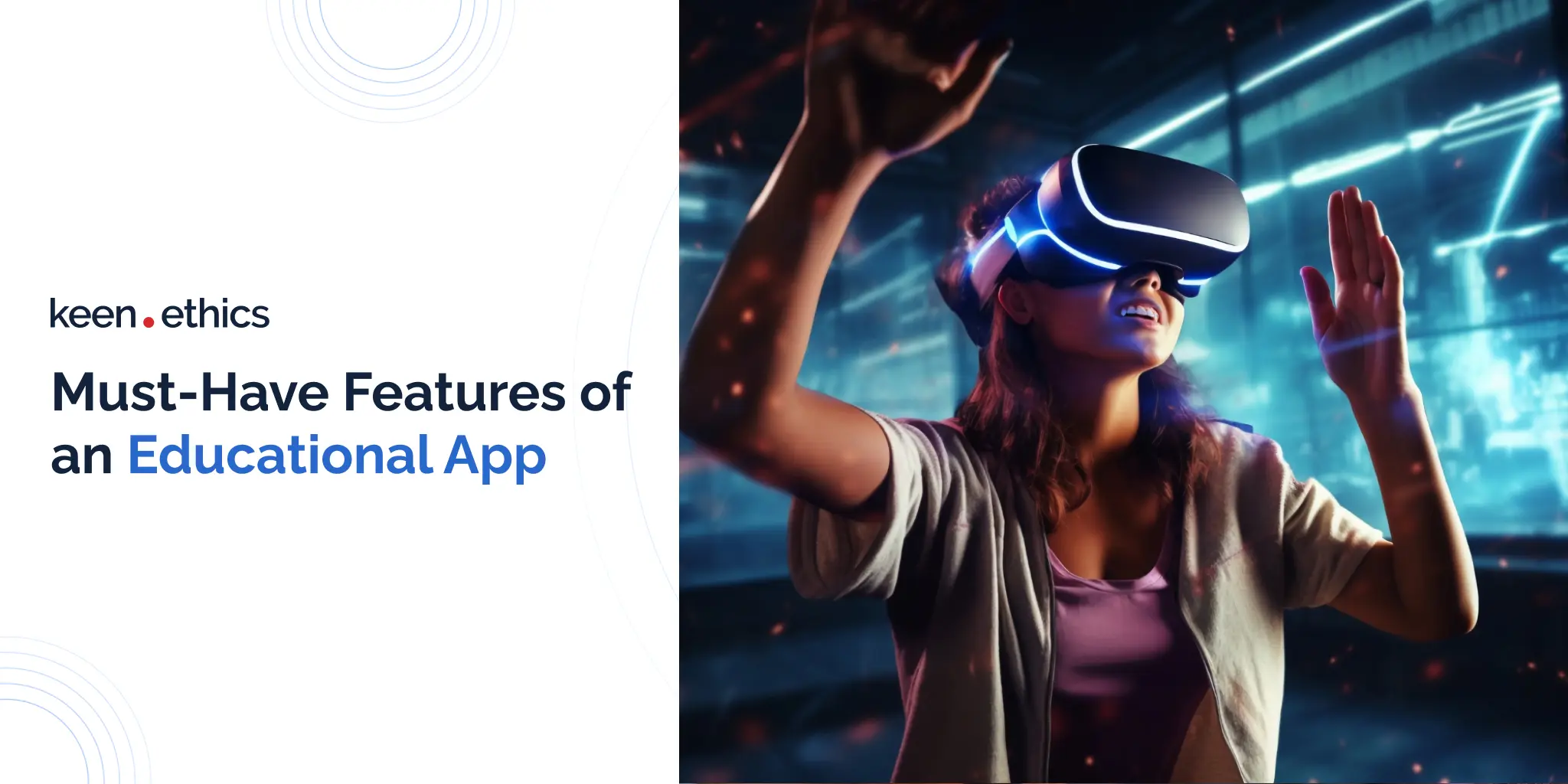Do you want to create an educational app? In this article, we’ll outline how to achieve your goal of delivering high-quality educational solutions to the relevant clients.
Overview of the Online Learning App Market
The modern online learning app market is among the most promising sectors in IT. 2022 projections indicated that it would grow at a CAGR of 17.5%. At this tempo, the market will increase from 210 billion dollars to 848 billion dollars by 2030. In short, there’s a potential for the educational application market to become four times bigger than today.
Moreover, the outlined e-learning app development projections may be too pessimistic from the standpoint of recent developments. Why? 2022 projections precede the massive rise in AI, which may bring about even greater transformations in the upcoming years. A CAGR of 17.5% presented by Custom Market Insights includes mainstream technologies like web development and gamification. AI is a game changer that can boost this number even further. Right now, making direct estimates is difficult because generative AI (for example, ChatGPT) isn’t fully researched. Hence, some projections are likely to be too optimistic or pessimistic, depending on the previous biases of the experts.
Our experience with AI technology indicates it’ll likely have a massive positive impact by promoting new education methodologies, such as inquiry-based learning and personalization. This technology is capable of answering complex questions for students. Moreover, it can analyze student experience and generate tasks based on their progress and talents. Now, each user profile in an education app is likely to host a unique learning experience.
Types of Educational Apps

Applications for children
The early periods of human lives are the best in terms of learning capabilities. For example, the learning capacity of children is so strong that they can deduce how a language works by listening to it and interacting with their parents. These extraordinary learning capabilities continue to be powerful until the end of teenage years (albeit the peak occurs around three to four years). This means educators and parents should actively use the presented timeframe to promote positive learning habits among children. Education application development is a perfect way to achieve this vital goal. Modern app developers can create a wide set of apps to promote a positive learning environment for their children.
Course-based platforms
While traditional learning is stressful for many people, as we’ll show below, the majority know how to properly manage this educational content. Consequently, it makes sense for them to engage in traditional education approaches to achieve maximal success. In this regard, the most powerful solutions involve the so-called course-based platforms. These apps allow users to access educational material at any location and time. Online courses provide learners with access to various resources, from textbooks to video and audio tutorials, to study on the web without difficulty. Many disciplined individuals are highly likely to benefit from this approach to learning.
Language-learning apps
It has never been so easy to learn a foreign language as today. In our opinion, the advancement of technology gives learners the best time ever to learn a new language. There are many apps like Memrise or Duolingo that help users acquire new words or even whole grammatical structures. These apps promote effective and quick ways of learning. Thanks to attractive design, friendly UI, and exciting assignments complemented with different scenarios, users improve their memory, cognitive skills, and communication. More importantly, all these achievements are possible at a minimum time investment. In the majority of cases, modern mobile applications promote learning sessions that take between 5 and 30 minutes at best.
Theme-based learning apps
A common issue teachers encounter in education is making learning interesting for students. One common complaint we hear from individuals is that learning is too impersonal. Why is this the case? The demand for learning is growing and, as a result, many classes or training courses in businesses are expanding with it. This, in turn, leads to a situation in which many people feel a misalignment between their interests and what is being taught.
Theme-based learning apps can be a solution to the presented problem. How exactly? They allow one to create apps focusing on particular topics and present some subjects or even multiple themes through their light. For example, children may like a carnival-themed app to learn about literature and math. In turn, various adults can prefer apps that look at math or physics from the standpoint of cooking or car maintenance. Since the methodologies in this sector aren’t fully developed, you have an opportunity to promote many great innovations aimed at seamless user experience in the presented case.
Educational games
Educational games are a potent way to learn for one core reason: most students don’t perceive games as learning. Today, the majority of people associate learning with tedious practices such as rote memorization or rereading. Stress is a significant factor in learning, according to current empirical articles. In turn, games represent an opportunity to completely abstain from this trend and learn in a way that isn’t tedious.
Well-thought-out and efficient gamification is complex in educational mobile app development, but it’s worth it. As learning goes hand in hand with entertainment, a development team can devise aggregated and exciting scenarios that will engage learners and, more importantly, reduce the core stressors associated with this process.
LMS apps
What do these apps represent in terms of features? Their concept is simple. They offer online education platforms that allow schools or businesses to place their courses on the web and make them available to students or new employees. LMSs don’t only provide learning courses but also enable teachers to collect and analyze information on student behavior. As a result, LMSs are noteworthy for their ability to drive massive changes in education through, for instance, data analytics. Large corporations often use LMSs to train their core staff. These educational apps make it easy to track, analyze, and assess employee performance while also giving tutorials in one place.
Keenethics has significant experience in education app development. In this respect, we have, for example, helped develop products like SelfLeaders. This software platform houses a collection of corporate training tools. SelfLeaders assist you in identifying organizational values, vision, and strategy. Using the platform, you can effectively establish a solid corporate culture and engage individuals in educational and working processes. If you’re keen to learn more about this platform, don’t hesitate to read our portfolio.
Are you interested in how an LMS might enhance the performance of your business or educational institution? Max Savonin, CEO of Keenethics, shares his vision of how LMSes can boost the success of your business or educational institution by offering five core arguments in the following article.
Classroom apps
A major limit for traditional classrooms is the equipment they have. In this regard, it’s often difficult to showcase some complex concepts, such as human anatomy, without using expensive teaching aids. Not all schools have sufficient resources for them. Consequently, they need cheaper solutions.
A perfect example of the cheaper approach comes in the form of classroom apps. Modern developers create numerous mobile solutions for helping educators. They can include basic features by, for example, showing 3D rendering of human internal structures. At the same time, those frameworks may be very complex and involve advanced learning solutions that help with calculations or present certain concepts, such as atomic or chemical structure, through games or virtual reality.
Core Steps for Creating an Educational App Aimed at Android and iOS

Do you want to create an educational app aimed at Android and iOS? Let’s review the core steps you should consider during the educational app development process.
Clearly outline the app you’re going to develop
The first step in any proper development process is understanding your development idea. What do we mean by understanding? Your idea shouldn’t be vague and involve several dispersed approaches. Many startup creators seemingly have a vision for future apps, but then fail to outline their requirements properly because they want an all-encompassing app.
Our recommendations for an app development company that seeks to create an educational app are as follows. Firstly, you should clearly outline the core function of your app. It must have one central feature that is going to attract users and serve as the main milestone for development. Secondly, you must clearly highlight three to five supplementary features that will make the core feature of the app as potent as possible. As you can see, every app idea must be cohesive: one concept should flow into the other. If this doesn’t happen, then there’s essentially no app but just a collection of different functions and features.
Do you have to think about being unique at this stage? Not necessarily: the goal is to create an idea that is cohesive and clearly solves some problem. For instance, a lack of evidence-based language-learning apps is evident today. Your app can act as a solution to this challenge. Why is it ultimately so vital to know what you’re after? When you know what issue you’re solving, it’s easier to analyze the market and make long-term decisions on it.
Research the market
Once you have a clear outline of your education mobile app development goals, it’s time to see if your idea actually fits the market. In this regard, multiple steps and approaches are available to the core developers.
The first and most widespread methodology of analysis is to review the basic features of the market. In this respect, you can discover the available apps and review what features various individuals request. This review can take both observational and experimental forms. On the one hand, a good idea is to first simply analyze the available information by collecting testimonials from forums and looking at reviews of the potential competing products. On the other hand, you should also consider more proactive methods, such as surveys or even full-scale experiments to determine if your product will create demand.
The second step is to test your product through some form of a prototype. You can go for a simplified version of certain app features and see if it’s viable through user focus group interviews. In case you’re sure about the success of your product, it’s also possible to go for an MVP and push a minimally viable version onto the market. This approach works well with promising fields that, for example, combine generative AI and language learning.
Integrate the essential features of the educational app market into your app idea
Modern educational app developers should look at the set of core vital features in the existing market and think about the ways to integrate them during the development process. In our opinion, the following features must be present in, more or less, every education app these days regardless of its core audience and strengths:
1. User-friendly interface and experience
2. Personalization capabilities
3. Tools for tracking progress
4. Interactivity
5. Multimedia integration for multimodal learning
6. Game-based elements
7. Tools for receiving feedback and providing support
8. Accessibility capabilities
9. Instruments for offline access
10. Socialization features (social network integration or forums/chats)
11. Compatibility with multiple platforms
12. Regular updates
13. High-quality security tools
14. Instruments for parental control
These features cover some of the most essential expectations that users have concerning all types of apps these days. For example, many people are ready to drop apps if they’re not user-friendly, even in cases when their functions are genuinely advanced. Socialization features are similarly vital in the presented case. They allow students to compare their progress, for example, or ask for help from other colleagues or educators.
Choose an appropriate tech stack for your app
A big aspect of success for various apps is the ability to choose a proper tech stack for them. Different functions and features benefit from different programming languages. Consequently, you should actively review the existing options on the market before making full-scale decisions.
For instance, C++ is a perfect language if you want to develop an app that focuses on calculations. MATLAB was created with the help of this language: the app is helping many generations of mathematicians, engineers, and economists to create advanced theoretical models within their sciences.
In turn, options like Node.js may be great in situations when your educational app design doesn’t presuppose advanced calculations but instead involves numerous users. The non-blocking I/O model allows this runtime environment to handle many connections by default, without any need to rewrite the code of your app once the app popularity scales.
It’s also vital to look at frameworks that minimize resource expenditures on cross-platform development. Swift or Kotlin may be the fastest options for iOS and Android, respectively, but they restrict your app to one particular platform. In turn, React Native enables you to manage both iOS and Android capabilities using JavaScript. As a result, you get to save time on optimizing your app, having the ability to spend it on tasks such as feature creation.
Find a custom app development company

When you have outlined all the core features of your app, a major step is to consider what type of development team you’ll have. On the one hand, it’s possible to invest in an in-house team. However, this option is likely to greatly elevate the development cost pressure on your company. The approach is useful only in the situation when you have genuinely large reserves of resources.
On the other hand, you have the option of hiring a custom app development firm. Why is this approach so positive for modern users? In our opinion, the answer is simple: it saves a lot of organizational costs. App development companies have already established teams with relevant experience. This means there’s no need to spend time on finding every expert and, more importantly, on establishing team cohesion between them.
Here’s a list of the core features you should consider while trying to hire an app development partner for your business:
• Development team with major experience in your field
• Knowledge of the Agile development model
• Expertise in cross-platform app development
• Understanding of the key ways to promote app scalability
• Good understanding of the main UI/UX design principles
• Strong mastery of the central testing and quality assurance frameworks
• Ability to comply with the prevailing data security standards
• Strong mastery of the core cloud development principles
• Ability to promote long-term support for your app
• Presence of consultancy and strategic planning services
• Availability of project management specialists
• Flexible technology stack that involves multiple core technologies
• Readiness to develop custom apps
• Readiness to engage in post-development optimization
• Competitive pricing
Launch, market, and maintain your app
The final step after development is launching and marketing your app. It’s not enough to develop a solution and bring it into the educational apps market. A core step to consider is also a marketing campaign. If customers have no idea that this or that app exists, they’ll not use it even if it fits their exact needs. As a result, you should actively think about investments in promotion campaigns of all types. Product promotion is undoubtedly a part of project costs.
Another vital step that will guarantee the loyalty of your audience is an investment in long-term support for your app. Education app development process shouldn’t be finished with the release of an app. One must actively invest in the creation of new features and other vital adjustments. Here, a suitable approach is to fix certain bugs and also add functions based on the requirements of the users. Constant updates are an especially vital process for subscription models of monetization, as they involve a constant payment for some service, which may be ceased if the customers believe that an app is abandoned by its developers. One-time purchase apps can also benefit from updates, as they raise the value of investing in a certain solution.
Must-Have Features for a Successful Education App

A successful education app must have multiple core features. Here are the top aspects app users want to see in modern edtech solutions:
1) Personalized learning: a major problem of traditional education is its focus on impersonality in teaching. Since teachers have to work with dozens of students at once, it’s impossible to ensure the interests of every person. Modern AI and machine learning is notable for its ability to analyze tremendous volumes of information and create person-centric learning programs based on it.
2) Gamification: traditional learning is associated with stress, as mentioned before. Modern edtech solutions solve this issue by using one of the core contemporary trends, the addition of game-like elements.
3) Multimodal learning: we know that people learning from multiple sources of sensory information have the greatest chances to succeed. Since education mobile app development makes it easy to incorporate text, video, audio, and even virtual reality, most learners expect to see those features in their mobile learning apps.
4) Collaborative tools: an ability to collaborate with other students during learning is essential for most students. In this respect, tools such as chats and forums are the best way to achieve this goal in the education sector.
5) Progress tracking: most people fail to achieve certain goals because they don’t track their successes. This leads to situations where they don’t see any progress since improvements are minor. Progress tracking tools are vital for showcasing how far a person advanced in this or another direction. It’s one of the best tools for boosting motivation.
Education App Development Best Practices

The current education app development market has a set of best practices we recommend following. Here are the top elements to consider:
Gamify as much as possible
We’ve already listed gamification as the top feature for modern education apps. However, there are different ways to add gamification. It’s possible to add it as an afterthought in the form of a random game. This is the path of traditional learning. Various language courses have game-like exercises. The core problem goes as follows: do they genuinely help make those apps engaging? Our experience shows that the answer is negative.
Hence, gamification shouldn’t be considered a separate feature. Instead, it must become a core element of design if you want your education app to succeed. Try to organize as many of your exercises and learning elements around something that has to do with games. For instance, Duolingo has a “hearts” system that acts like a Health Bar in a video game. It also has a combo function: several right answers will give you a visualized streak. In short, every element of learning has game-like aspects in them. We recommend a similar approach to individuals who want to achieve success with other educational apps.
Try to make learning social
How to build an educational mobile app that becomes better with the growing number of users? You should, above all, make learning as social as possible. Why is this the case? Socialization is a strong addition to learning because it creates an advanced support network for learners. For instance, various courses on edX feature hundreds and even thousands of users discussing their content online.
Let’s imagine the following situation. You have a degree in history. In turn, John holds a degree in mathematics. Both of you enroll in a course applying mathematics to historical trends (for example, cliometrics). Neither you nor John may possess sufficient skills to engage with the learning material. By interacting online, however, you can teach each other how to deal with historical and mathematical concepts. This collaboration will assist you and other individuals with similar or different credentials to go through a difficult interdisciplinary subject. In short, making learning social is vital if you want to maximize your outcomes.
Promote microlearning
Microlearning is among the trends that, in our opinion, are essential for making various apps successful in modern markets. Why is this the case? Most people don’t have much time for learning these days. Productivity has been growing for more than 200 years and, consequently, modern workers have to dedicate increased effort to work in comparison to the past. Yes, the majority work in 9-to-5 settings, but the overall pressure per hour of work has increased. In this light, many people don’t have enough time for learning (especially, considering the rising demands for child education: parents often have to spend many hours helping their offspring with homework).
Approaches like microlearning are a strong solution to the presented problem. How does it work? A typical learning session in a microlearning app takes between 5 and 15 minutes. In short, even the busiest people are likely to find at least some time for education with such programs. What are the core examples of the apps that use this model? Memrise is among the major success cases. It allows users to learn words and expressions from different languages through a card system. Every session takes between 5 and 10 minutes. As a result, learners can make major progress in their education despite spending minimal amounts of time on learning. Over several years, an investment of 5 to 10 minutes per day can easily grow into hundreds of hours.
Offer efficient personalization
How to develop an educational app that would fit as many people on the market as possible? Invest in AI and use it to personalize apps to the unique needs of the users.
Once again, personalization isn’t merely a feature you can add to an app as an afterthought. It’s a core function around which the majority of the activities in an app should revolve. Many apps add personalization to certain features instead of making it a cornerstone of the whole learning process.
In this regard, our recommendation is simple: try to add personalization features to the main flow of your app. What makes YouTube so profitable? This video service is notable because it uses its recommendation algorithm as a vital part of the monetization models. Advertisers make money on this service since the users are recommended relevant information that maximizes their buying potential.
Similarly, the most successful edtech apps combine personalization with other features. For instance, Lingq is noteworthy for offering a large library of learning materials and a tool that allows learners to create their own vocabulary. These instruments are part of its monthly subscription model. Thus, personalization actually plays a role in the usage of this app.
Use core innovations
The final recommendation we can give you here is to focus on core innovations in various computing-related sectors. What are some of those innovations?
Firstly, there’s an opportunity to use the increasing processing speed. You can now launch advanced AI features or engage in Big Data collection. Secondly, many computers and even smartphones are now good at visualizing 3D objects with a sufficient frame rate. This means Virtual Reality and Augmented Reality are both easy to implement. Most modern smartphones and PCs are capable of launching them. Lastly, major innovations also occur in the sphere of encryption technologies. You can use blockchain to guarantee fair records of game results in a gamified education app, for example. We recommend reviewing as many innovations as possible if you want to achieve maximal success with this feature today.
What Is the Average Development Time for an Education App?
According to our experience, the average development time for an education app is between two and five months for small and medium products. In turn, larger apps can take a year or more.
How to Monetize an Educational App?

The appropriate methods of monetization typically depend on the app type. Therefore, you should always test different ways to increase your ROI. The best way to define the monetization model for an app is to look at its type, target audience, and objectives.
Let’s review several ways to monetize your educational app:
Paid apps
Although it’s a simple option, not all users are willing to pay for a software product. Here, you should highlight the strengths of your app as compared to competitors, present unique features that will make your app genuinely necessary for learning, and set a reasonable price.
Free app
If you choose to make a free app, you can use one of the following monetization strategies:
Subscription
This method of monetization is highly popular since it’s flexible. Subscription models allow users to avoid large-scale payments in scenarios where they need an app for a limited amount of time. In turn, the developers typically receive a higher engagement from the users because of this factor. Subscriptions usually come in the form of monthly and yearly options. Advanced users can also pay for a lifetime option if they think they’ll use an app for many decades. Drops, a popular language application, has successfully implemented this method and reached 25 million users so far.
In-app advertising
In-app advertisements are yet another win-win solution for all stakeholders. The customers get to use a free app. The developers receive payment for their work. Lastly, advertisers can gain larger audiences for their solutions.
Some of our readers may note that advertisements have a negative reputation these days. It’s true, but you should understand that this happens for two reasons, which are easy to avoid. Firstly, it’s critical to ensure that ads aren’t invasive for the users. Otherwise, they may stop using the app because they find it annoying. Secondly, restrict content to something acceptable: regrettably, many advertisers are willing to promote products with low reputations.
Freemium model
This approach allows you to distinguish between an app’s free and premium features. The free version of an app typically provides users with basic learning materials, allowing them to assess their skills and try out how new methods work. Premium resources have advanced content, guaranteeing the maximal efficiency of the new methods that are being used in the education process.
Built-in purchases
You can make most of the features available for users but require them to unlock those functions at a steady pace. In this regard, it’s possible to create different rewards, badges, or coins for the learners’ progress, which they can use to unlock more premium modules and additional features. Those who lack virtual money can pay real funds, using in-app purchase mechanisms, to proceed with their course.
Consult our tech experts on any matter of interest in education software development, and apply the right strategy to fit your idea of an educational app.
Popular Educational Apps
These days, smartphones serve as core tools for educational purposes. We’ll look at a few popular apps and highlight their strengths and distinctive features that make them desirable to consumers.
Duolingo
You don’t have to sit in a class to learn a language. You can use Duolingo, a popular language-learning platform, instead.
The main advantage of this app is that it allows users to learn several languages simultaneously. It also contains many gamification elements, cool badges, rewards, and challenges.
Google Classroom
In our opinion, there are multiple reasons to use this app:
• Use it anywhere;
• Remove the necessity for physical learning aids and paper;
• Improve organization;
• Ease collaboration
• Keep track of student grades;
• Gain access to unlimited learning resources.
Khan Academy
Khan Academy is famous worldwide, delivering students material for many courses and classes. The main goal of Khan Academy is to give knowledge to everyone. There are 10,000 unique videos, 50,000 unique free activities, 999 million lessons provided, and over six billion problems solved. Regarding methodology, Khan Academy employs an exciting format of lessons to help learners better acquire knowledge.
How We Can Help: Keenethics Example

Keenethics is a growing web and mobile software development company, and educational mobile app development is one of our domains of expertise. We have been developing digital solutions for the education industry since 2015.
We’re excited to share several of our large-scale projects that have a vast community of users:
Brainable
It’s a brain-training website that allows you to discover what your mind can do.
SelfLeaders
This software product offers unique approaches and modules, helping users to become leaders capable of solving personal and global challenges.
Let’s Start Coding
It’s a valuable desktop app, that offers learners knowledge and skills in the basics of computer coding.
If you desire to learn more about our educational apps in other industries, view our portfolio.
To Wrap Up
To summarize, the task of developing a high-quality education app is undoubtedly complex. You have to consider multiple large-scale factors, such as novel technologies and learning methodologies. If you want help in this regard, our firm is ready to assist. We have more than 8 years of development experience in sectors like edtech. Don’t hesitate to contact us.
Don’t hesitate to contact us if you require assistance from Keenethics’ IT experts. We’ll gladly advise you on how to develop an educational app.
FAQ
What are the core reasons for the popularity of educational apps?
What are the primary trends in educational app development?
The core trends include gamification, AI use, personalization, focus on evidence-based practices, and socialization.
What’s the cost of developing an education app?
In this case, everything depends on specific costs: you can address our experts to get an answer.
What platform do you recommend for education apps, Android or iOS?
The best option is to develop for both platforms. Platforms like React Native make this process simple.
What should I consider when choosing an app development company?
Look at its experience, available experts, and expertise in your sector. Additionally, it’s a good idea to track its reputation.
 Search
Search















